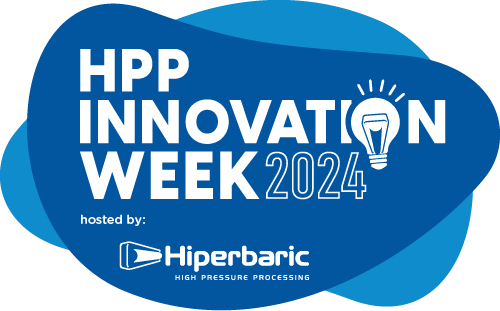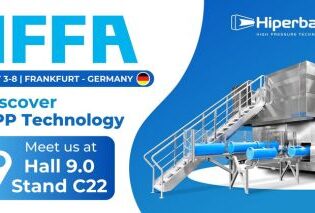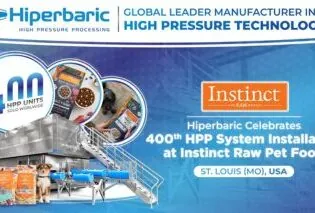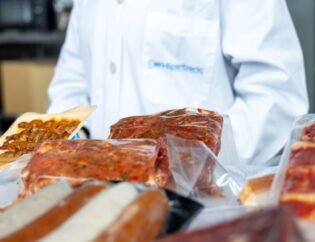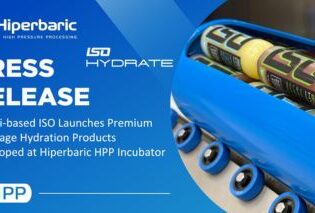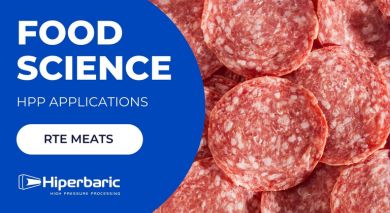

High-pressure processing (HPP) is helping the ready-to-eat (RTE) meat industry, offering solutions to two critical challenges: Listeria monocytogenes control and salt reduction. Recent foodborne outbreaks in the US have highlighted the persistent threat of Listeria in RTE meats. HPP emerges as a powerful tool for ensuring food safety while meeting evolving regulatory requirements.
Combating Listeria monocytogenes with HPP
The FSIS-USDA (2012) approved HPP as a post-lethal treatment, recognizing its effectiveness in controlling Listeria monocytogenes. As a post-packaging intervention, HPP eliminates the risk of recontamination, providing a significant advantage over traditional methods.
Recent research studies underscore HPP’s efficacy:
Deli Meat
- Two fuet products (with different water activity values 0.86 and 0.89) treated with HPP (600 MPa, 180 s) achieved a 6.2-log reduction in Salmonella spp., E. coli (STEC), and L. monocytogenes after 30 days of storage.
Effects of high-pressure processing on the safety, quality, and shelf life of ready-to-eat meats.
- Strassburg beef, low-fat pastrami, export sausage, and Cajun beef were processed with HPP (600 MPa, 180 s) and yielded non-detectable levels of L. monocytogenes (4-log reduction) after 70 days of storage (4 ºC).
- An Iberian dry-cured “salchichón” and a dry-cured loin yielded >3-log reduction of Listeria monocytogenes. Listeria remained undetected for 120 days of storage after being processed with HPP (600 MPa, 8 min).
Cooked RTE Meat
- Cooked sausages were processed with HPP (600 MPa, 3 min). The process helped reach a 5-log reduction of Listeria monocytogenes, and no recovery was found at 4 °C for 35 days.
High-pressure processing applied to cooked sausages: bacterial populations during chilled storage.
- Processing cooked sausages with HPP (72,518 psi, 5 min) helped keep Listeria spp. (initially 2.13-log CFU/g) below the detection limit during 18 weeks of storage.
- After processing RTE-sliced cured ham, HPP (600 MPa; 3 min) achieved a 3.98-log reduction in Listeria monocytogenes during 182 days of refrigerated storage.
- A cooked ham was processed with HPP (600 MPa, 5 min). A 4-log reduction of Listeria monocytogenes was maintained for 90 days of storage at 1-6ºC.
HPP: A Solution for Salt Reduction
Due to the recent update on “Sodium Reduction in the Food Supply by the FDA,” there is increasing pressure (pun intended) for meat processors to reduce salt content in processed foods.
HPP offers a unique advantage and solution. The process enhances saltiness perception by promoting sodium binding to proteins and protein denaturation, allowing manufacturers to maintain flavor profiles while reducing sodium levels. Formulations with a reduced sodium content could be developed by employing HPP; however, salt cannot be substituted entirely since it favors the product’s texture and flavor (O’Neill et al., 2019).
Studies supporting HPP’s role in salt reduction include:
- The formulation of pork sausages was optimized by reducing fat and salt content. The salt content was reduced by 10% after applying HPP (29,000 psi for 2 min).
- A sensory analysis analyzed the consumer acceptance of different cooked ham formulations with different salt content percentages. The study concluded that HPP could be an option in combination with salt replacers and organic acids to create a product that is accepted by the consumer.
Conclusion
HPP stands out as a versatile technology addressing two major challenges in the RTE meat industry. By effectively controlling Listeria monocytogenes and facilitating salt reduction, HPP helps manufacturers meet food safety regulations while aligning with health-conscious consumer demands. As the industry continues to evolve, HPP is poised to play an increasingly crucial role in producing safer, healthier RTE meat products.

